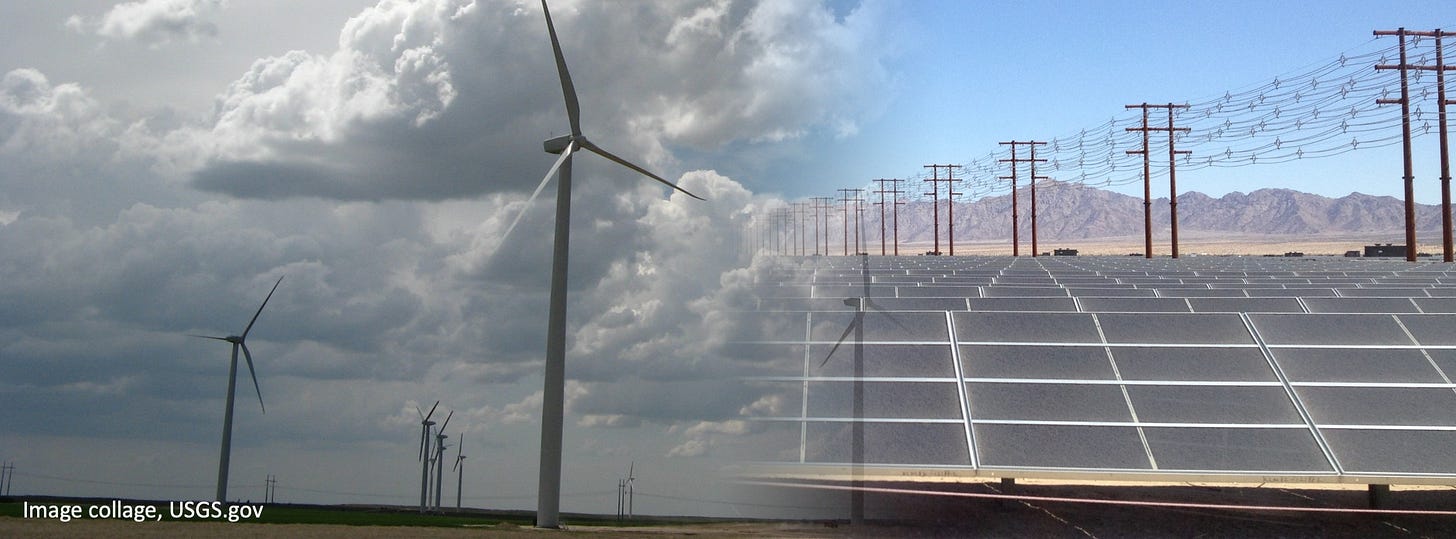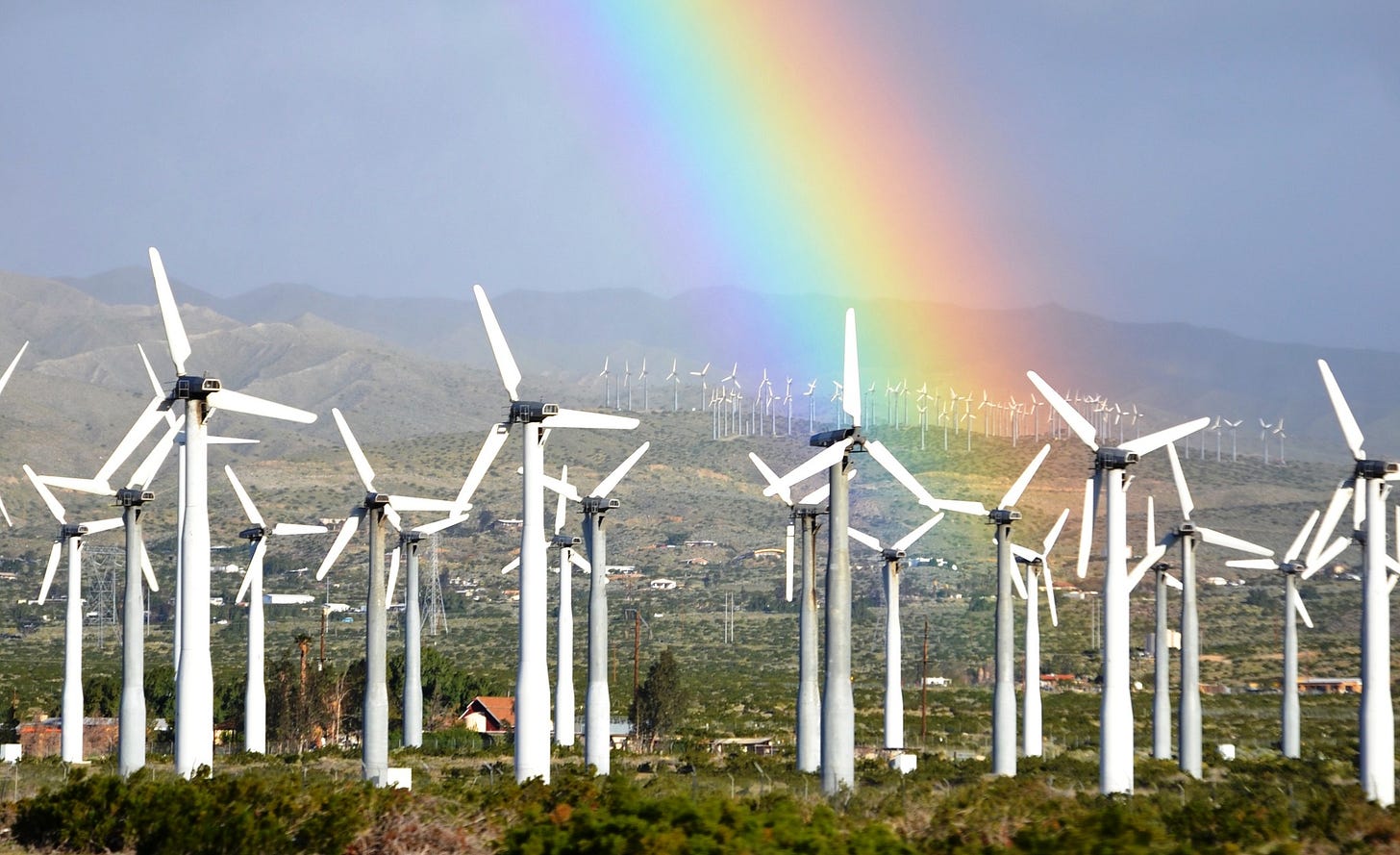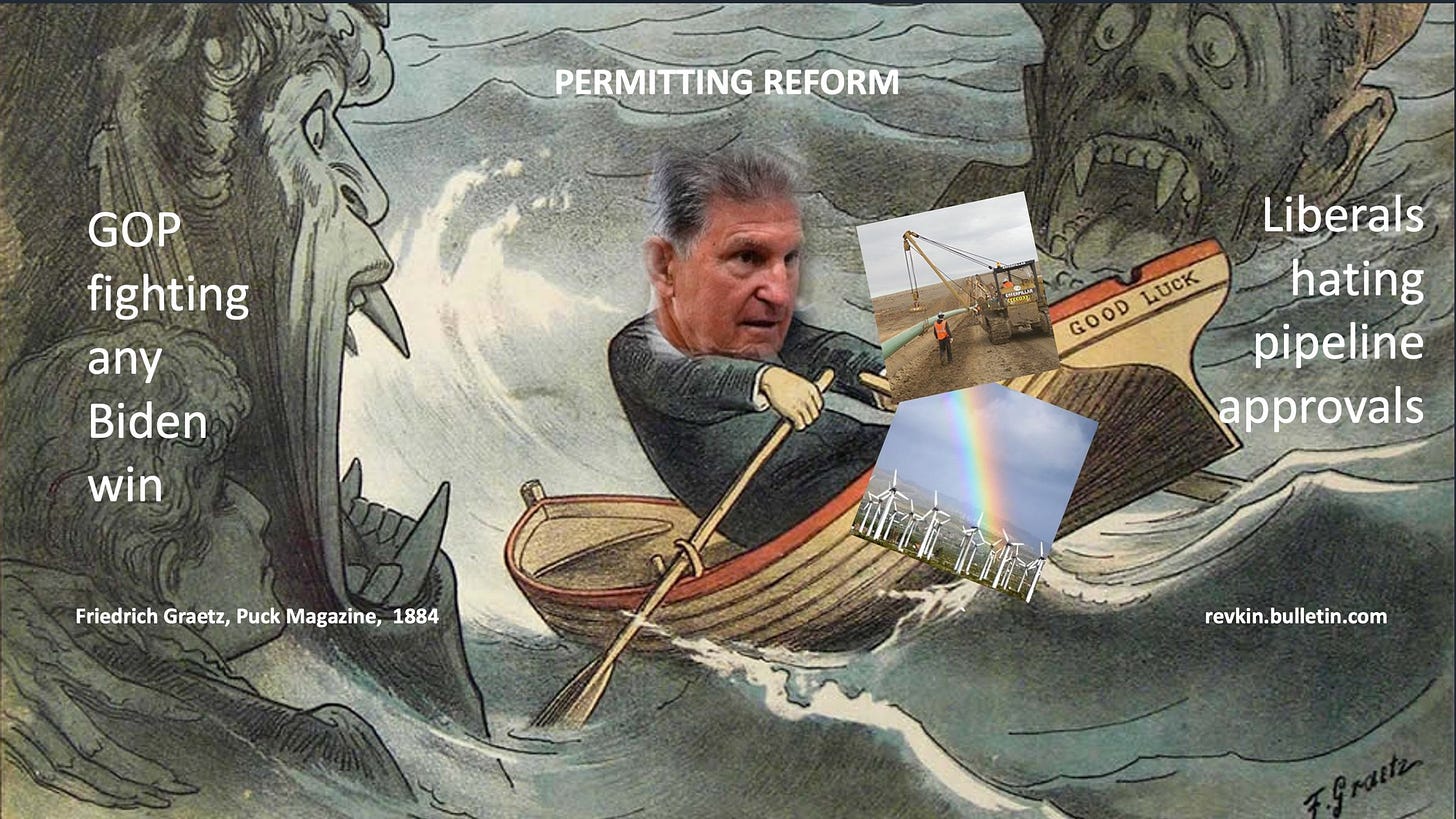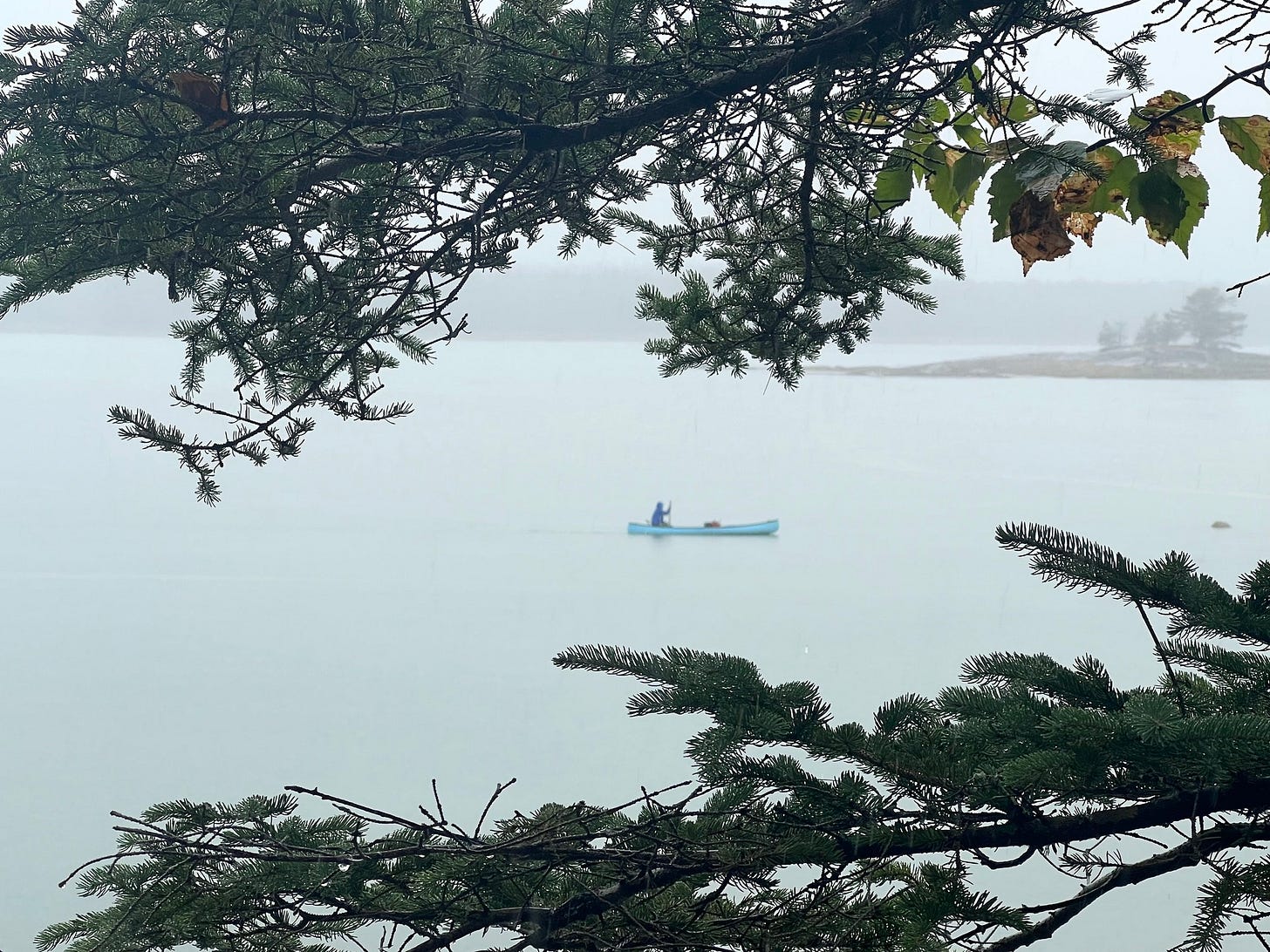When Climate Action Meets Energy Friction: Why Permitting Reform is Easier Sought than Done
We look into the thorny, mostly local, challenges impeding efforts to speed a path from U.S. fossil norms to a climate-safe energy future.
Listen to this Sustain What webcast on these issues with Representative Sean Casten of Illinois and a batch of experts with mining journalist Jael Holzman:
Brush aside rainbows and confetti
Hopefully, the celebrations over the $369-billion climate package in the Inflation Reduction Act of 2022 don't have your head full of rainbows like the one photographed in 2016 by Jeff Lovich of the U.S. Geological Survey over ranks of first-generation wind turbines.
The scope of greenhouse-gas emission reductions under this reconciliation package will largely depend on overcoming deep-rooted sources of friction that have long hindered efforts to upgrade or transform America's energy systems.
And most of those sources of friction were explicitly excluded from the models that have been used quite breathlessly in recent days to describe where this remarkable legislative achievement will take the United States.
One of the constant touchstones of those hailing passage of the bill (including me) is Princeton University's analysis of the package's climate impact. It's valuable real-time modeling, but this disclaimer is vital reading (boldface added):
"Optimization modeling used in this work assumes rational economic behavior from all actors. The modeling also has limited ‘frictions’ on deployment of infrastructure (e.g., power generation or transmission capacity), scale-up of industry supply chains (e.g., wind and solar), or consumer adoption of alternative products (e.g., EVs, heat pumps). Real world outcomes will contend with various non-cost related challenges that may slow pace of change relative to modeled results."
Needless to say, those are gigaton-scale caveats.
When was the last time your (or my) economic behavior was fully rational?
I'm grateful to Matthew Nisbet, a longtime Northeastern University analyst of climate policy and communication, for pointing to the report disclaimer and a heap of related research on sources of climate-policy friction in an invaluable Twitter thread. I'm with him predicting a medium to high level of friction based on the history of transmission line, pipeline and wind power battles.
That second disclaimer is worth a closer look: "Real world outcomes will contend with various non-cost related challenges that may slow pace of change relative to modeled results."
Jesse Jenkins and the team at Princeton and their counterparts at Rhodium Group and elsewhere are doing indispensable rapid analysis of such climate-policy proposals.
It's just vital for the rest of us not to over-interpret them and to find ways to address sources of stasis.
The fear factor in energy friction
Here are just some of the "non-cost related challenges" that cannot be modeled but we all know abound out there in the actual world:
They include long-standing opposition, often both libertarian and liberal, to energy rights-of-way, whether for power lines or pipelines. (I'll be doing a separate post and Sustain What webcast on unwarranted power-line fears that have for decades intensified friction. Revisit the New Yorker's alarmist "Annals of Radiation" series by Paul Brodeur, and the science, as homework. To learn how alarmist that series and other coverage was, watch the Retro Report documentary on "Power Line Fears.") Robinson Meyer nailed the issues and offered some solutions in a feature last year in The Atlantic with this great sub-heading: "If America wants to fight climate change—or enjoy the benefits of a modern economy—it must get much better at building electricity transmission. Yikes." As I was told in 2008, "If you love wind, you've got to at least like transmission." We still don't.
INSERT, August 25 - I had a chat with Jin Choi and Thomas Shine, whose architecture firm focuses in part on building beautiful infrastructure and who, more than a decade ago, began developing a whimsical alternative to conventional power-line towers. Please watch and let me know what you think!
There are tough foundational rights disputes, as with Native American stances on lithium mining in the West. (Read this Shelley Harjo op-ed on Thacker Pass, then explore the Lithium Americas take.) I'll be looking into the mining challenges attending the renewable-energy buildout on a visit to Reno next month. Send me your tips and sources!
The hurdles include a thicket of decades-old laws and procedures that have stalled big infrastructure upgrades of all kinds. These fights between local stakeholders and federal imperatives are thorny, often with no clear right and wrong. Watch the Bloomberg Law video explainer to learn "Five Reasons it's so hard to build stuff in America":
In a future Sustain What webcast and dispatch, I'll get at an enormous source of energy-transition friction - the glaring gaps in America's workforce (HVAC, electrical) that need filling if there's any hope of accelerating the pace of change. (Click back to my Sustain What conversation with Grist journalist-turned-electrician Nathanael Johnson and read his relevant Twitter thread here for an appetizer.)
Finally, there's old-fashioned toxic political climate friction generated by the intensifying fight over how to maintain energy security in the short run - still a function of access to oil and gas for now - while pursuing climate and energy security for the long haul through a transition to sources like wind, solar and nuclear power. This leads to a "man the barricades" form of politics.
You're seeing that last dynamic playing out right now around the side agreement to pursue a bipartisan bill on permitting reform that was a condition of Senator Joe Manchin's support for the big climate package passed by Democrats.
That deal was classic Beltway stuff, involving wrenching compromises made by Democratic congressional leaders and the White House to satisfy immovable demands of Manchin, representing the conservative, fossil-dependent state of West Virginia.
Manchin recently told West Virginia media that he plans to attach a permitting-reform package to a must-pass continuing resolution next month. He is also holding on firmly to his demand that the Mountain Valley Pipeline in his home state and Virginia be prioritized. Natural gas power plants, for now, remain vital for balancing renewable electricity feeding into the grid, but of course pipelines are hated by everyone in their path.
As E&E News has been reporting, permitting reform isn't rocket science: "The proposal floated by Manchin includes well-known concepts such as two-year limits on environmental reviews under NEPA, revisions to Clean Water Act approvals and limits on judicial review. It also includes the creation of a new priority list of projects to include those for fossil fuels, nuclear energy, carbon capture and renewables."
Manchin’s stormy path
But it is increasingly evident he will be fighting both liberal Democrats in Congress focused on the rights of local or marginalized communities and obstructionist Republicans seeking to block any further Biden administration achievements (this even though Republicans have long sought such reforms).
How will this play out?
Some Washington insiders tell me to expect high drama, with all sides getting in their shots and a permitting-reform package ultimately passed, but after the midterms - not forced as part of the annual fall ritual vote maintaining government operations.
Mark that down and let's see what happens.
In the meantime, don't miss our unfettered Sustain What discussion of the issues and options with some remarkable guests, including:
Representative Sean Casten, a climate-focused lawmaker who represents Illinois’ Sixth District, worked in businesses harvesting waste heat long before moving to Congress, and was a Sustain What guest back in April discussing this question: “Can Congress Get Beyond Posturing as Energy and Climate Crises Collide?” The answer for Democrats with the reconciliation package was clearly yes; the answer for permitting reform is still up in the air.
Jael Holzman, a reporter at E&E News/Politico focused on the mining side of energy and resource tussles. Read Holzman’s latest stories here. Follow her on Twitter at @jholz__.
Claudine Pied, a University of Wisconsin, Platteville, researcher who has deeply studied the complex roots of rural opposition to federal energy projects. She spent a year in Maine doing in-depth interviews with people across the spectrum of interests and situations. We’ll discuss the resulting studies, including “Negotiating the Northwoods: Anti-establishment rural politics in the Northeastern United States.”
Romany M. Webb, a senior fellow at Columbia’s Sabin Center for Climate Change Law who’ll discuss several relevant projects there, including the Renewable Energy Legal Defense Initiative and a regularly updated report titled “Opposition to Renewable Energy Facilities in the United States.”
You can watch on LinkedIn, Facebook, YouTube or Twitter at @revkin.
Your turn
Let me know what local energy action, or inaction, has vexed or excited you.
Here in Maine it seems companies installing heat pumps have staffed up and stocked up sufficiently to get homeowners (who can afford the investment) on the path from fossil energy toward cleaner alternatives. It looks like our log home will have heat pumps before the first winter chill.
Here are two images from one installer's bid showing where one ductless unit will go.
I'll take you along as we move ahead and fill those blanks with systems.
This is not cheap. From personal experience I can attest that the Inflation Reduction Act focus on cutting up-front costs through federal rebates for lower-income households is essential if this option is to be widely adopted.
~ ~ ~
Send me feedback (including corrections!), tips, ideas here.
Find my social media accounts, books and music in a click here. And please share Sustain What with solution-focused friends and colleagues.
Parting shot
We have a neighbor who is a professional harvester of marine worms for the live bait trade. She was out recently despite a welcome steady, heavy rain - one of the first of this dry summer.










